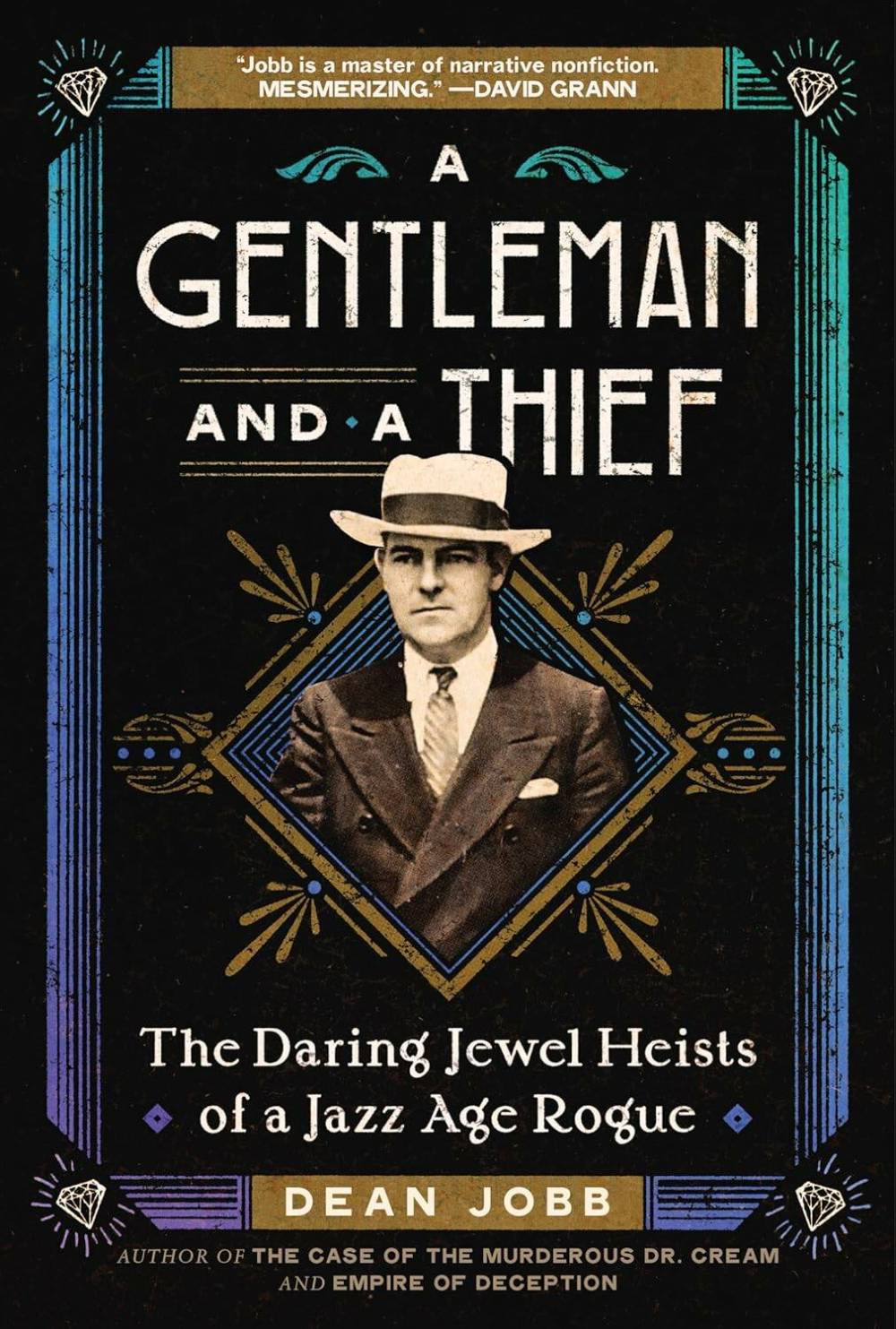Criminally charming
New York jewel thief’s exploits recounted in dynamic, vivid account
Advertisement
Read this article for free:
or
Already have an account? Log in here »
To continue reading, please subscribe:
Monthly Digital Subscription
$0 for the first 4 weeks*
- Enjoy unlimited reading on winnipegfreepress.com
- Read the E-Edition, our digital replica newspaper
- Access News Break, our award-winning app
- Play interactive puzzles
*No charge for 4 weeks then price increases to the regular rate of $19.00 plus GST every four weeks. Offer available to new and qualified returning subscribers only. Cancel any time.
Monthly Digital Subscription
$4.75/week*
- Enjoy unlimited reading on winnipegfreepress.com
- Read the E-Edition, our digital replica newspaper
- Access News Break, our award-winning app
- Play interactive puzzles
*Billed as $19 plus GST every four weeks. Cancel any time.
To continue reading, please subscribe:
Add Free Press access to your Brandon Sun subscription for only an additional
$1 for the first 4 weeks*
*Your next subscription payment will increase by $1.00 and you will be charged $16.99 plus GST for four weeks. After four weeks, your payment will increase to $23.99 plus GST every four weeks.
Read unlimited articles for free today:
or
Already have an account? Log in here »
Hey there, time traveller!
This article was published 20/07/2024 (470 days ago), so information in it may no longer be current.
Audacious, daring and brazen, Arthur Barry was one of the most notorious cat burglars of the Roaring Twenties. “A bold imposter, a charming con artist, and a master cat burglar rolled into one,” as described by Halifax journalist, author and creative writing professor Dean Jobb, Barry roamed New York City’s grand suburbs of Long Island and Westchester county, stealing all the diamonds, pearls, rubies, emeralds and other precious gems he could lay his hands on.
In A Gentleman and a Thief, Jobb tells the tale of an infamous professional thief who flummoxed lawmen and terrorized the elite for nearly a decade with energy and flair.
Barry grew up in Worcester, Mass. at the turn of the last century. His descent into a life of crime started when he was tasked with transporting volatile liquid nitroglycerin to safecrackers across the upper northwest United States. Eventually he became a “second-storey man,” climbing into the bedrooms of the wealthy to steal their jewels.

Supplied photo
Barry (left) began to dress like the gentlemen he was robbing to better fit into their world.
Jobb employs a creative non-fiction style, and uses dynamic imagery, active language and vivid description to set the scene and engage his reader. But he’s very clear from the beginning that while Barry’s exploits seem to be too amazing to be believed, this story is all based on meticulous research from court records and newspaper accounts of the day. The combination of fact and narrative is compelling, pulling the reader along for the ride.
Barry began to dress like the gentlemen he was robbing, to better fit into their world. By the mid-1920s, he was suave and daring enough to break into a home hosting a party for the Prince of Wales, then accompanying the prince on a tour of New York City’s nightlife to better make his escape.
Jobb’s research is not contained to Barry’s exploits; he places everything in the context of national and international events of the time. This draws the reader in and evokes a deeper understanding of the political and social mores and pressures that inspired Barry’s criminality.
“Barry learned and refined other tricks of his lucrative trade. Determined never to leave fingerprints, he was obsessive about wearing gloves… he devoted time and effort to planning his getaways… [and] he spent days exploring the areas around suburban New York’s wealthy enclaves, and soon devised a far more audacious ploy to worm his way into the elegant homes and charmed lives of the people he was about to rob,” Jobb writes.
Barry invested his winnings in a gambling club called the Harlequin, spent thousands in the city’s clubs and speakeasies and lived the high life while travelling to Miami and Paris. In 1925, he married political worker Anna Blake, whom he told nothing about his life of crime.

Kerry Oliver photo
Dean Jobb
But his high-flying lifestyle came to an end when “the gentleman thief” was finally caught. Barry confessed to save his innocent wife from prosecution, but broke out when she was diagnosed with cancer. He managed to stay ahead of the law for three years, but sensational newspaper articles and accusations by private detectives who had worked to arrest Barry during his jewel-thief days gathered steam and led to his capture.
Barry was tried and convicted of escaping jail and had another seven years added to his sentence. Following the death of his wife in the late 1930s and upon his release in 1949, Barry became a respectable citizen and lived a quiet life with his family before dying in 1981.
Jobb’s impeccable research and captivating writing style takes the reader into the heart of 1920s New York, crafting an intelligent, thoughtful and exciting account of the life and times of one of the United States’s most infamous lawbreakers.
Julie Kentner is a Winnipeg writer.



